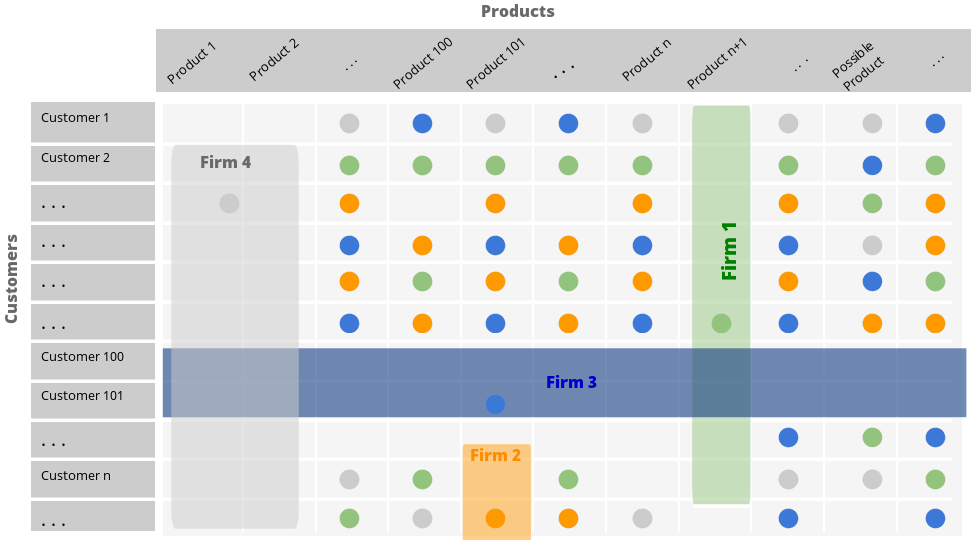After providing the definition and discussing types of strategic dimensions (see my previous article) here I show some cases of practical use.
Creating a Dimension and Lining Competitors
The practical use for these strategic dimensions is for analyzing and segmenting for analysis. Dissect or break up the whole space of possible strategic choices along several dimensions. This allows a better understanding of the possible strategic alternatives that the company or the industry faces in a more adequate, commensurate, and straightforward way.
If we take the product dimension as an example, you classify products (or product groups) along the dimension axis. The next step is listing the major competitors for each product. Subsequently, you can understand where the companies producing these products are concentrated. After that, the strategic possibilities are more patently seen, so the decision-makers have all the options available to view the full picture.
Chessboards or Maps
There is an important characteristic of the dimensions analysis that makes it such a valuable tool. The most practical uses are multi-dimensional chessboards or multi-dimensional maps. The maps are created when several dimensions were specified and then two of them are intersected on a plane in a table-looking form.

Multi-Dimensional Space
Speaking with the help of mathematical concepts, these maps are projections of an infinite-dimensional space of possibilities. In the ideal state, this is when for a particular company all dimensions of all the characteristics and possible strategic choices for each dimension are specified and included. These dimensions with choices on them create an infinite multi-dimensional space. At least in theory, in this way all the variants of strategic decisions can be mapped in this space. Nevertheless, nobody, of course, tries to look and analyze these choices in the infinite-dimensional space.
2D vs. 3D
Normally, simple plane maps are used. For example, you can map the products dimension and the clients dimension. Then you just intersect the two. Strategic meaning being the company trying to satisfy its customers with its particular products or groups of products. More rarely, a 3D version is used. However, these 3D versions are more complex to grasp but in some cases can be useful for providing insights on an additional more intricate level.
To sum up, dimensions are extremely helpful in practical strategic management and strategy development. After defining the major dimensions, 2D or 3D multi-dimensional maps are created. The whole competition field can be drawn on such a map revealing the possible strategic options.

Comments are closed, but trackbacks and pingbacks are open.